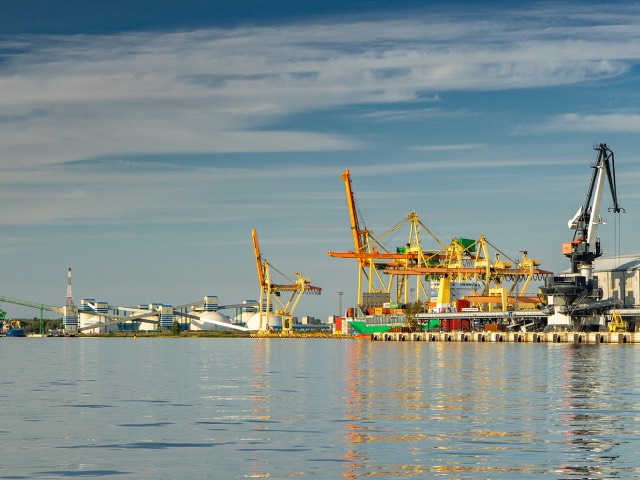The year 2020 was an important turning point for the Port of Riga in terms of cargo structure changes – the volume of cargo of local origin as well as with higher added value has significantly increased, and currently accounts for 57% of the total port cargo turnover.
“Despite the impact of the Covid-19 pandemic on the transportation industry and the decline in Russian energy cargo, in 2020 the Freeport of Riga has been able to maintain its financial stability, invest in port infrastructure and continue implementation of development projects,” said Mr. Ansis Zeltins, the Freeport of Riga CEO.
Although last year 23.7 million tons of cargo were handled at Riga port, which is by 9.1 million tons less than in 2019, almost the entire volume decrease of 8.8 million tons is related to fossil segment cargo – i.e. coal and oil products. Cargo groups – grain, timber and containerized cargo, which were previously defined in the port development plans as the top priorities, have maintained stable growth trends by the end of the year.
“The Russian cargo crisis has given a significant impetus to the business environment of the Port of Riga fostering further development aimed at cargo diversification and quality. The port companies continue to actively invest in cargo handling technologies, additional warehouse capacity and IT solutions. The share of cargo of Latvian origin in the port’s cargo structure has increased both in percentage and in absolute terms, which proves the potential of the Latvian export market. In general, despite the fierce competition between the actors, the Riga port companies’ operation in 2020 has become more efficient, “smarter” and definitely more sustainable,” added the Freeport of Riga CEO.
In 2020, Latvian grain growers more frequently used the Port of Riga to export their products. This trend has facilitated a new highest achievement for grain product cargo – in total, almost 3 million tons of grain products were handled at the Port of Riga. Due to its favorable geographical location, investments of port companies in the development of terminals as well as competence in dry bulk cargo handling the Port of Riga is able not only to successfully compete with other market players, but also to pursue its ambitious goal to become a regional leader in grain handling.
Exports of forestry cargo continue to develop steadily, accounting for a quarter of the port’s total cargo turnover. Last year, 5.8 million tons of various forestry products and timber were handled at the port of Riga. In addition to timber storage and handling, the Riga port companies are expanding their involvement in timber processing – from drying and impregnation to the production of semi-manufactures for wooden house modules. Such services not only increase the competitiveness of companies operating in the Port of Riga in the forestry cargo segment, but also promote local exports.
Although the Covid-19 pandemic crisis has had a drastic impact on container shipments around the world in the spring, the volume of containers handled at the terminals of the Port of Riga has been maintained at the 2019 level. In 2020, 453.57 thousand TEUs were handled at the Port of Riga.
The Port of Riga is the largest port in Latvia, in 2020 more than half (53%) of the total cargo volume of Latvian ports was handled at the Port of Riga.









































